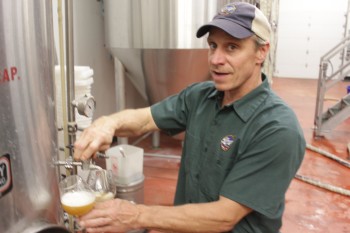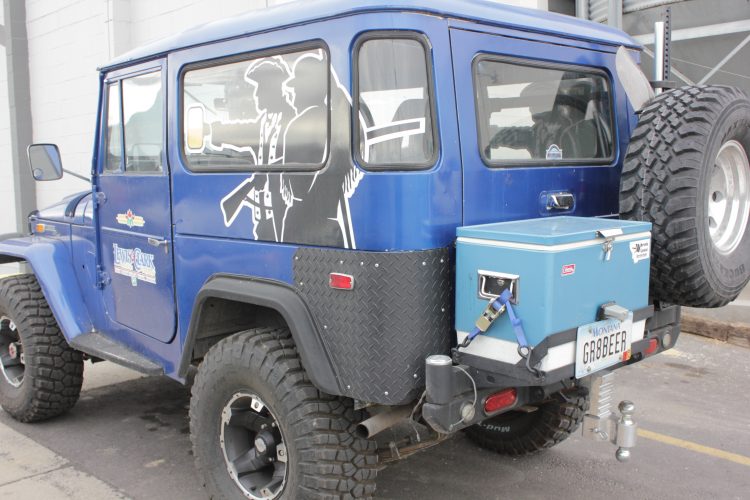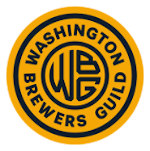Updated February 14: This has been a popular topic. I have added more information at the bottom of the original post.
Did you know that Montana currently ranks second in the United States in terms of breweries per capita? Vermont is number one. There is something happening in Montana that is worth talking about here on the Washington Beer Blog. An ongoing battle threatens Montana’s vibrant and rapidly growing craft beer industry. By our standards here in Washington, local craft beer is under attack in Montana. Admittedly, mine is an outsider’s perspective.
Understand that liquor laws are state laws. When alcohol became legal again in 1933, each state created new laws governing the production and sale of alcohol. This explains why the laws vary from state to state. Recognize that laws governing breweries and tasting rooms are also, for the most part, state laws.
Like Washington, when a brewery in Montana gets a license to produce beer it is also granted permission to have a tasting room where people can sample the beer. For reasons discussed below, Montana law strictly regulates beer service at the state’s breweries. A brewery tasting room can only serve a customer three pints per day. Also, tasting rooms can only operate between 10:00 a.m. and 8:00 p.m. You will learn these rules quickly if you go to Montana and visit breweries, which is something I highly recommend you do.
Those restrictions seem bizarre by Washington’s standards, but during a recent visit to Montana, one which saw us visit 15 of the state’s 38 breweries, we heard very few complaints about the tasting room laws. Neither the brewery owners nor the patrons seemed too bothered. Three pints per person per day, closed by 8:00 p.m. It seemed to be détente – a compromise between the Montana Brewers Association and the Montana Tavern Association. Read on.

Recently, the Montana Tavern Association endorsed legislation that would have devastated the Montana brewing industry. The bill, which has now been tabled, would have further restricted a brewery’s right to sell its own product directly to consumers. Some referred to it as the 90/10 rule. The law would have limited a brewery’s on-premise sales to 10 percent of its annual production. A brewery that produces 1,000 barrels per year could not sell more than 100 barrels per year in its own tasting room, for example.
People in the Montana brewing industry say that the law would have shut down all but seven of Montana’s 38 breweries. Devastation. Nearly 80 percent of the state’s breweries eradicated with the stroke of a pen.
So much for détente.
For now, this bill seems to languish and the threat seems tabled. However, the Montana Brewers Association fully expects the Montana Tavern Association to continue its war on breweries. I should point out that this is an outsider’s perspective. Maybe it doesn’t seem like war to them.
Alan McCormick originally broke the story. He assures me that I am not overreacting. “I can confirm that calling it a war on breweries is an accurate description,” Alan told me.
McCormick produces Growler Fills, a Montana-based craft beer enthusiasm blog. He broke the story on his blog back on January 16. Most of the breweries learned of the legislation after he posted the news. Thanks to the power of the Internet and social media, the legislator sponsoring the bill quickly heard from the opposition. The backpedaling began once the cat was out of the bag. That’s why the bill has now been tabled.
Good work, Alan.
According to McCormick, the Tavern Association is already working on a second round of legislation. It aims to sound better than the first, but promises to be equally devastating for the craft beer industry. McCormick will soon post more information about the proposal on his blog.
Taverns vs. Breweries – It Seems An Unnatural Battle
Why would the Montana Tavern Association be at odds with the Montana Brewers Association? Allow me to explain briefly and in simplest terms.
Montana issues liquor licenses based on population. In Washington, if you want to open a tavern, the state will issue you a liquor license unless there is some reason for them not to issue you a liquor license. Basically, you’ll get your license unless the local jurisdiction prohibits it or you have an unsavory criminal past. In Montana, it depends on the population. Until the population grows in a particular town or city (“quota area”), the state issues no new licenses.
If there is a price to be put on an existing license, it is driven by the market. Getting one of the new licenses, when they become available, is like winning the Lottery. Don’t believe me? According to Montana state law:
When the department receives the information from the US Bureau of the Census and the population has increased enough to allow for additional licenses in any particular quota area, the department is required to publish the availability of the specific type of license and the number available in the newspaper of greatest circulation for that quota area for 4 weeks with a 10-day deadline after the last date of publication to give equal opportunity for any person to notify the department using a Lottery form that they are interested in that license..

As you can imagine, this gives liquor licenses a real value in Montana. If you own a tavern in a city like Missoula, your tavern’s liquor license might be worth as much as a million dollars. That is what we were told anecdotally, anyway.
Whatever the actual value, a Montana liquor license is practically a license to print your own money. For the most part, license holders do not have to worry about another tavern opening across the street and stealing customers. For the fortunate few, theirs is one of the five drinking establishments in town. Period.
The value of liquor licenses explains why Montana law restricts how a brewery sells beer at its tasting room. If people can go drink alcohol at a brewery, it devalues the liquor licenses. The brewery becomes competition for the tavern. The Montana Tavern Association wants people to spend their alcohol dollars at taverns and bars. Period.
It’s big money. The Montana Tavern Association is powerful. I’m not sure what we can do as outsiders to help the Montana Brewers Association in this fight. I’m not sure they want our help. One thing is certain, I would completely freak out if someone introduced legislation in Washington that threatened to shut down 80 percent of ours breweries.
By the way, we talked to people in Montana about the obvious solution: get a liquor license and open a brewpub. Why not open a pub where you serve nothing but your own beer? Such a plan is a viable option if you have the money. Again, liquor licenses are expensive if they are available at all. Most breweries we talked to suggested that it was not a reasonable option.
As I’ve said, I am an outsider on this one. Alan McCormick of Growler Fills (a Montana-based beer enthusiasm blog) has thus far published two articles on this subject. I strongly encourage you to read his articles on this issue.
Montana Tavern Association Takes Aim at Montana Tap Rooms
Taverns and Breweries: Making Sense of the Mess
I encourage you to use the following links to educate yourself further on the brewing battle in Montana.
From the Montana Brewers Association
The Montana Standard’s article on the issue.
The Ravalli Republic article on the issue
Info added on February 14.
One Montanan told me via email: “As I remember it, the law which originally allowed microbreweries to have tasting rooms with limited hours was a big compromise which also set up beer and wine licenses for restaurants and which bought off the Tavern Owners Association by giving them expanded gambling machines. The gambling machines were a license to print money. For some reason this compromise is now forgotten as the MTA is attempting to sabotage the tasting rooms.”
Here is the current statute:
16-3-213. Brewers or beer importers not to retail beer — small brewery exceptions. (1) Except as provided for small breweries in subsection (2), it is unlawful for any brewer or breweries or beer importer to have or own any permit to sell or retail beer at any place or premises. It is the intention of this section to prohibit brewers and beer importers from engaging in the retail sale of beer. This section does not prohibit breweries from selling and delivering beer manufactured by them, in original packages, at either wholesale or retail.
(2) (a) For the purposes of this section, a “small brewery” is a brewery that has an annual nationwide production of not less than 100 barrels or more than 10,000 barrels.
(b) A small brewery may, at one location for each brewery license, provide samples of beer that were brewed and fermented on the premises in a sample room located on the licensed premises. The samples may be provided with or without charge between the hours of 10 a.m. and 8 p.m. No more than 48 ounces of malt beverage may be sold or given to each individual customer during a business day.
History: En. Sec. 11, Ch. 106, L. 1933; re-en. Sec. 2815.20, R.C.M. 1935; Sec. 4-315, R.C.M. 1947; redes. 4-3-205 by Sec. 120, Ch. 387, L. 1975; R.C.M. 1947, 4-3-205; amd. Sec. 7, Ch. 19, L. 1985; amd. Sec. 1, Ch. 149, L. 1985; amd. Sec. 1, Ch. 116, L. 1999.
Here is the 1999 law on tasting rooms: http://data.opi.mt.gov/bills/
Here is the 1999 law allowing liquor license holders to own gambling machines: http://data.opi.mt.gov/bills/

































